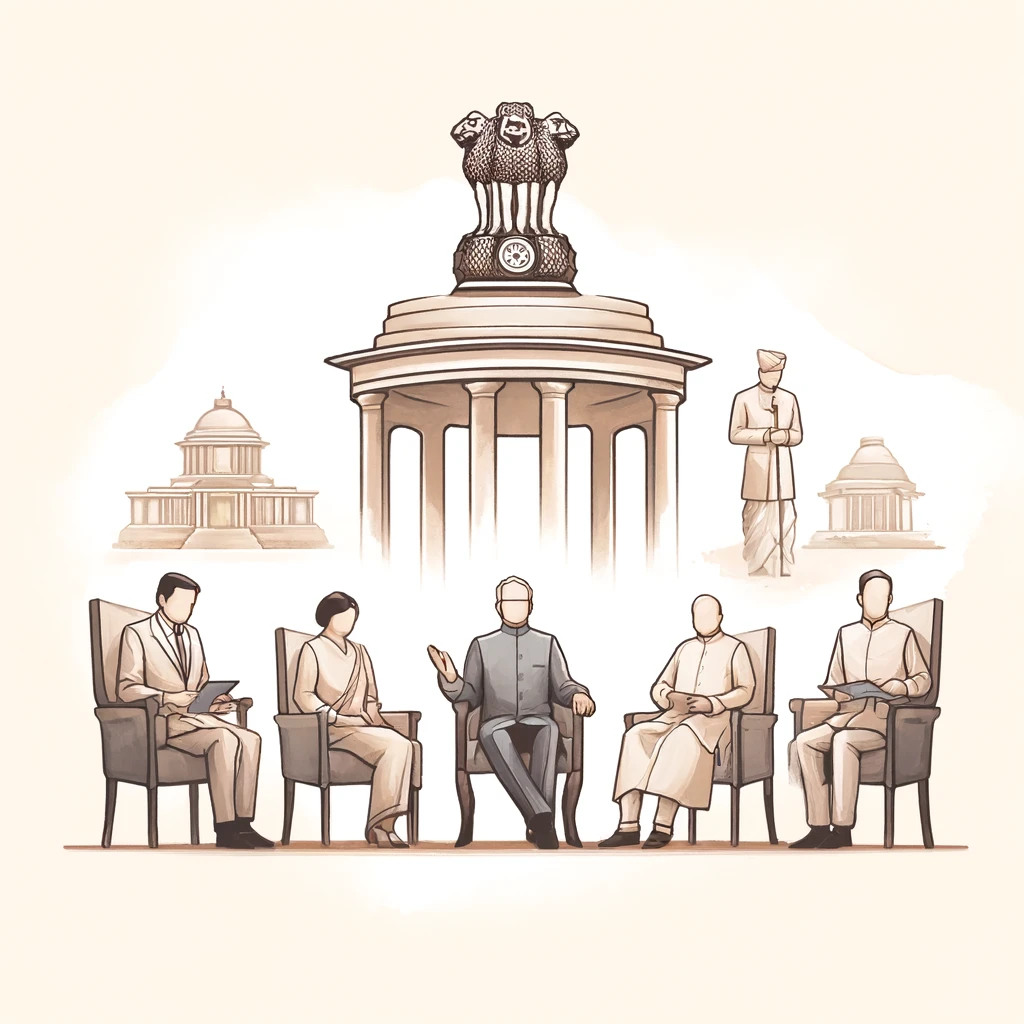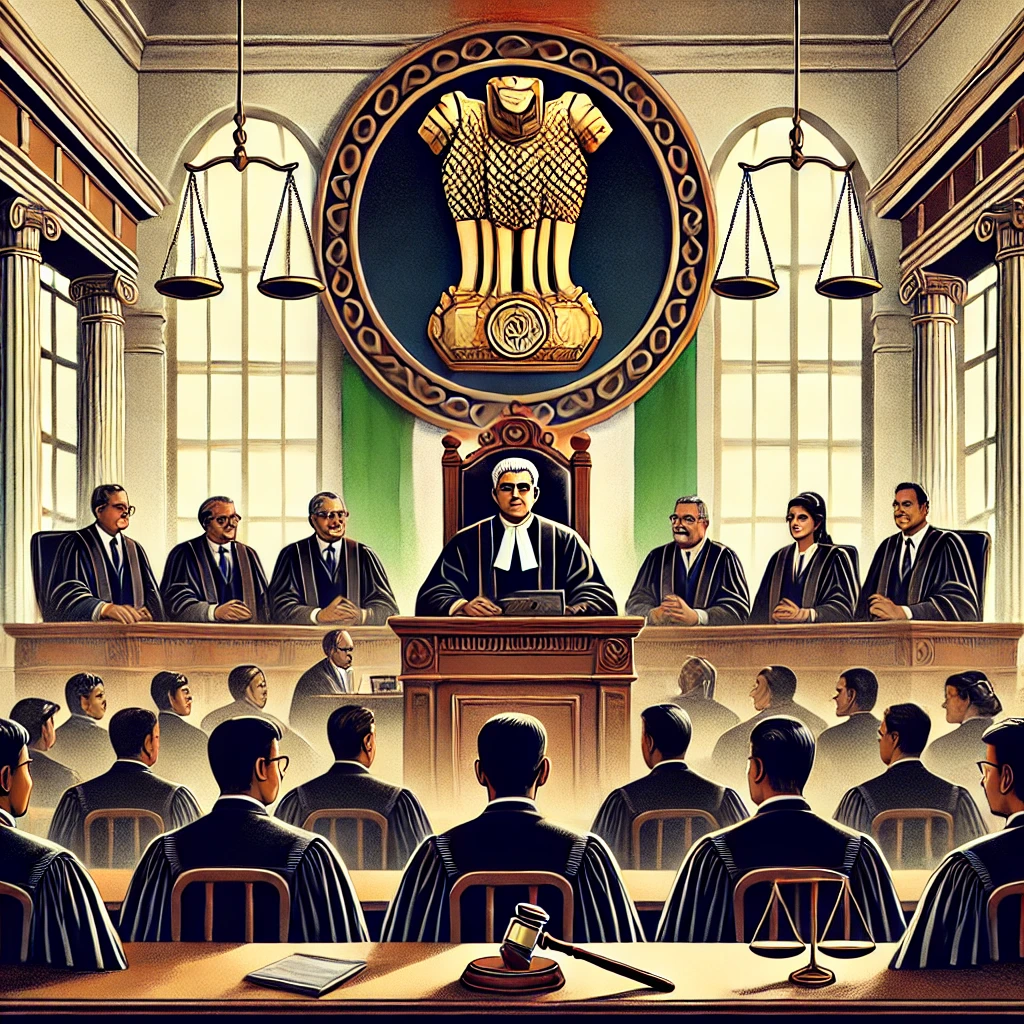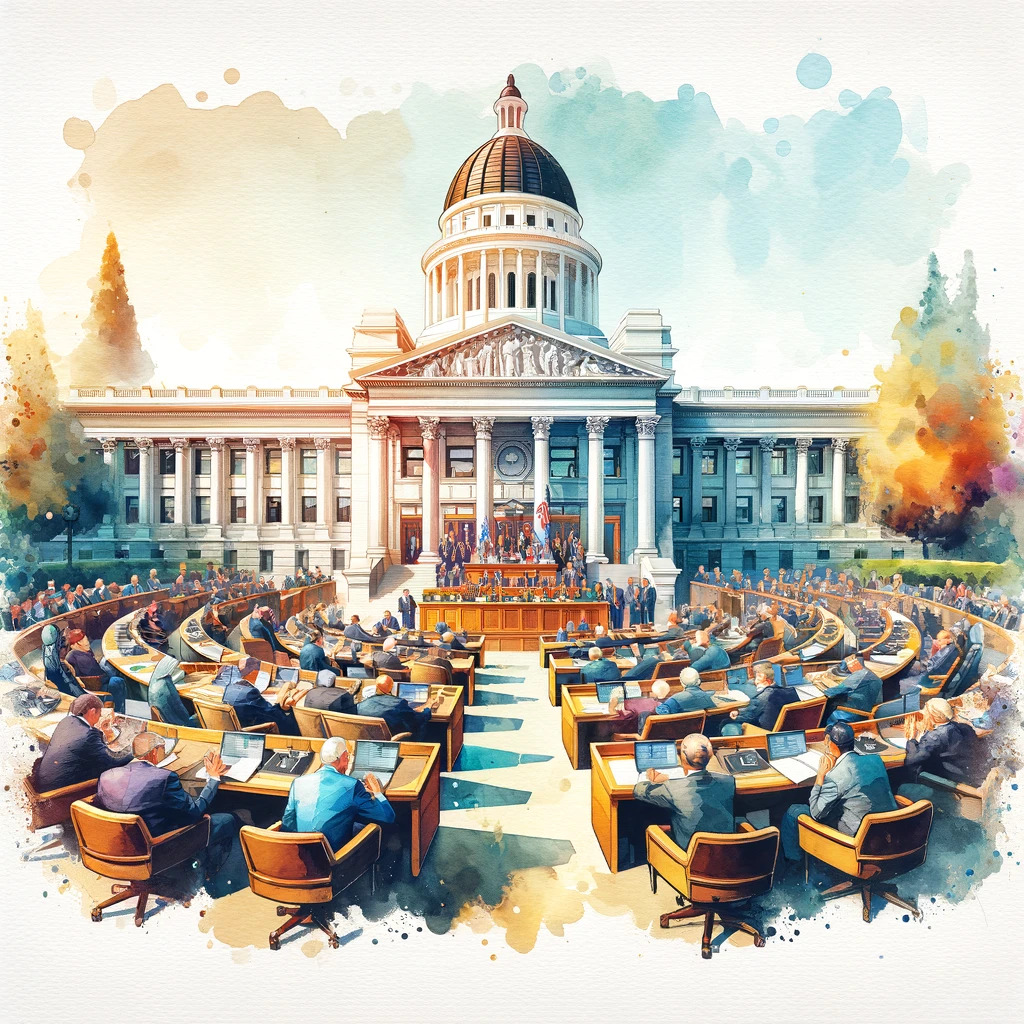State Government happens to be an important body in a federal system of administration that is concerned with the governance of individual states or regions. The State Government functions under the constitution with law and order, policies, and development in the respective territories. Decisions for education, healthcare, agriculture, and local infrastructure in any State Government are undertaken independently. Important functions of the State Government include:
- Providing safety to the public and providing police machinery within the state’s boundaries.
- State education institutes and policies for elementary and higher education.
- Thus, they should manage state resources such as water, forests, and agriculture to sustain their development.
- Hospital and Public Health Services.

The Governor: Powers, Functions, and Discretionary Powers
The Governor is the constitutional head of a state, appointed by the President of India. The office of the Governor is modeled after the President at the Union level but with certain distinct functions and responsibilities tailored to the state’s needs.
Powers and Functions:
- Executive Powers: The Governor appoints the Chief Minister and, on the Chief Minister’s advice, the Council of Ministers. They also appoint key state officials, including the Advocate General and members of the State Public Service Commission.
- Legislative Powers: The Governor summons and prorogues the state legislature, can dissolve the Legislative Assembly, and addresses the first session of the legislature after general elections. They can also reserve certain bills for the President’s consideration.
- Judicial Powers: The Governor has the power to grant pardons, reprieves, respites, or remissions of punishment for offenses against state laws.
- Financial Powers: The Governor ensures that the state budget is presented to the legislature and can recommend the introduction of money bills.
- Discretionary Powers: In specific situations, such as recommending President’s Rule, appointing a Chief Minister when no clear majority exists, or reserving bills for the President, the Governor exercises discretionary powers.
Discretionary Powers:
- Appointment of the Chief Minister: When no party has a clear majority, the Governor can exercise discretion in appointing the Chief Minister.
- Dismissal of the Council of Ministers: If the Council of Ministers loses the confidence of the Legislative Assembly but refuses to resign, the Governor can dismiss it.
- Dissolution of the Legislative Assembly: The Governor can dissolve the Assembly when advised by the Chief Minister, but can also act independently under specific circumstances.

Chief Minister: Role, Powers, and Functions
The Chief Minister is the head of the state governments and the leader of the Council of Ministers. They are the principal advisor to the Governor and play a crucial role in the state’s governance.
Role and Powers
- Executive Powers: The Chief Minister leads the executive branch of the state governments, setting policies and priorities. They also allocate portfolios among the ministers.
- Legislative Powers: The Chief Minister plays a significant role in the legislative process, introducing bills and ensuring the passage of important legislation.
- Administrative Powers: As the head of the Council of Ministers, the Chief Minister oversees the implementation of policies and the administration of state departments.
- Party Leadership: The Chief Minister typically serves as the leader of the ruling party or coalition in the state legislature, coordinating between the party and the government.
Functions
- Policy Formulation: Leading the formulation and execution of state policies.
- Cabinet Meetings: Presiding over cabinet meetings and driving decision-making processes.
- Advising the Governor: Providing advice to the Governor on various matters, including the appointment of ministers and dissolution of the assembly.
- Representation: Representing the state in interactions with the Union government and other states.
State Council of Ministers: Appointment and Functions
The State Council of Ministers, headed by the Chief Minister, is the collective executive authority of the state. It is responsible for implementing state laws and policies.
Appointment
- Selection: The Chief Minister is appointed by the Governor. The Chief Minister then recommends other ministers, who are appointed by the Governor.
- Composition: The Council includes Cabinet Ministers, Ministers of State, and Deputy Ministers.
Functions
- Executive Functions: Implementing laws, maintaining law and order, and managing state administration.
- Policy Making: Formulating policies and decisions for the state’s development.
- Financial Management: Preparing the state budget and managing financial resources.
- Legislative Duties: Introducing and debating bills in the state legislature.
- Advisory Role: Advising the Governor on various state matters.
Relationship between the Governor and Chief Minister
The relationship between the Governor and the Chief Minister is pivotal in the smooth functioning of the state government. It is characterized by cooperation and coordination but also includes checks and balances.
Dynamics
- Advisory Role: The Chief Minister advises the Governor on the appointment of ministers and other key decisions.
- Ceremonial vs. Real Power: The Governor is the ceremonial head, while the Chief Minister holds real executive power.
- Checks and Balances: The Governor can seek information from the Chief Minister and the Council of Ministers, ensuring accountability.
- Crisis Situations: During political instability or no clear majority, the Governor’s discretion in appointing the Chief Minister becomes crucial.
Challenges
- Political Interference: Potential for conflicts if the Governor acts on behalf of the central government rather than impartially.
- Dissolution of Assembly: Tensions can arise over the recommendation to dissolve the legislative assembly.
State Public Service Commission: Role and Functions
Introduction:
The State Public Service Commission (SPSC) is a constitutional body responsible for recruitment to state services and advising the government on personnel matters.
Role and Functions
- Recruitment: Conducting examinations and interviews for appointments to state civil services.
- Advisory Role: Advising the state governments on promotions, transfers, disciplinary actions, and service conditions.
- Regulations: Framing and amending recruitment rules.
- Annual Reports: Submit annual reports to the Governor on its activities and performance, which are then tabled in the state legislature.
Significance
- Merit-based Selection: Ensuring fair and merit-based recruitment to state services.
- Administrative Efficiency: Contributing to the efficiency and effectiveness of the state administration through proper staffing.
Emergency Provisions in States: President’s Rule
President’s Rule is a provision under Article 356 of the Constitution that allows the central government to assume control of a state’s administration in specific situations.
Conditions for Imposing President’s Rule
- Failure of Constitutional Machinery: When the Governor reports that the state governments cannot function according to constitutional provisions.
- Loss of Majority: When no party secures a majority in the legislative assembly or the ruling party loses majority support.
- Non-compliance with Union Directives: When a state fails to comply with directions from the Union government.
Implications
- Central Control: The state’s executive authority is exercised by the Governor on behalf of the President, and the state legislature is either dissolved or suspended.
- Administrative Changes: The President can assume the powers of the state executive and legislature, and make necessary administrative changes.
- Judicial Review: The imposition of the President’s Rule is subject to judicial review to prevent misuse.
Conclusion
The state executive structure, comprising the Governor, the Chief Minister, the Council of Ministers, and the State Public Service Commission, plays a critical role in the governance of states. Understanding the powers, functions, and interactions of these entities is essential for comprehending the administration and political dynamics at the state level. Additionally, the conditions and implications of imposing President’s Rule highlight the balance between state autonomy and central oversight. This knowledge is particularly relevant for UPSC aspirants preparing for the civil services examination, as it forms a significant part of the polity syllabus.
| State Government UPSC Notes |
| 1. State governments in India derive their powers from the Constitution, which clearly defines their roles in maintaining law and order, public health, and agriculture. 2. The State Legislature consists of the Governor and two houses, but in some states, it is unicameral with only a Legislative Assembly. 3. Governors, appointed by the President, play a crucial role in state governance, acting as a bridge between the state and central government. 4. State governments manage law and order through police forces under the state’s jurisdiction, maintaining public safety and internal security. 5. Public health is a primary responsibility of state governments, which manage healthcare infrastructure, disease control programs, and medical education. 6. Agriculture and irrigation are under the state list, making state governments vital in policy-making for rural development and agricultural growth. 7. States can levy taxes on goods, land, and agriculture, but their financial dependence on the Centre often affects autonomy in resource allocation. 8. Education, from primary to higher levels, is a key area for state governments, with responsibility for policy implementation and ensuring access to quality education. |


